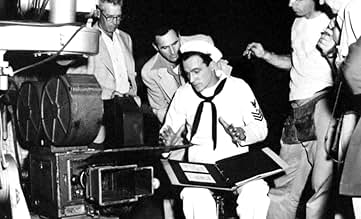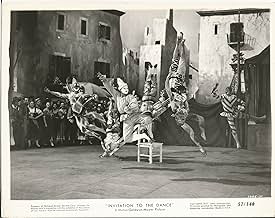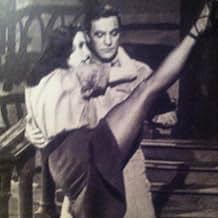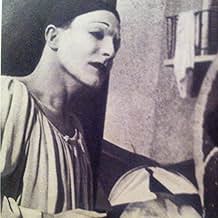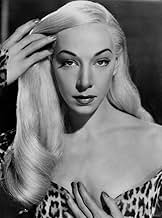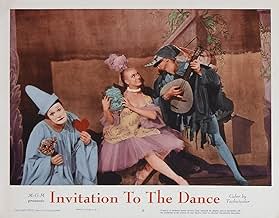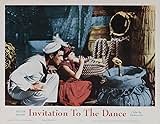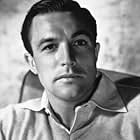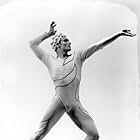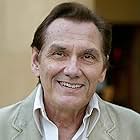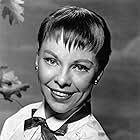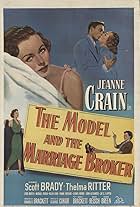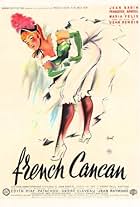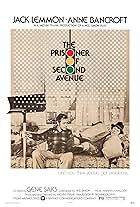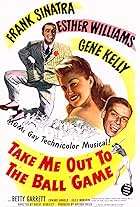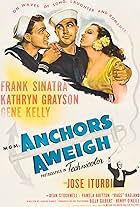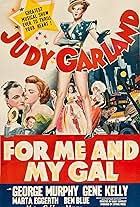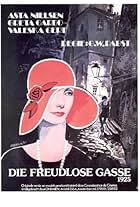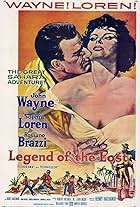Invitation to the Dance
- 1956
- 1h 33m
IMDb RATING
6.4/10
1.1K
YOUR RATING
Three different stories are told through a notably unusual way - no words, just dance.Three different stories are told through a notably unusual way - no words, just dance.Three different stories are told through a notably unusual way - no words, just dance.
- Awards
- 1 win & 1 nomination
Luigi Faccuito
- Specialty Dancer
- (uncredited)
Diki Lerner
- Thief in 'Sinbad the Sailor'
- (uncredited)
Paddy Stone
- Speciality Dancer
- (uncredited)
- Directors
- Writer
- All cast & crew
- Production, box office & more at IMDbPro
Storyline
Did you know
- TriviaGene Kelly's original intention was to make a film that would educate mainstream audiences about professional dancing in the world. To this end, he wanted to cast the greatest dancers in Europe for the four segments in leading roles. He himself would appear in only one - the Popular Song sequence, which ended up being cut. MGM, however, refused to allow the picture unless he appeared in all of them. Many of the professionals who worked in the film agreed that this was one of the film's great weaknesses.
- GoofsDuring the "Scheherazade" sequence, the color of the palace guard's costume changes from green to blue.
- ConnectionsEdited into American Masters: Gene Kelly: Anatomy of a Dancer (2002)
- SoundtracksCircus
Music by Jacques Ibert
Performed by The Royal Philharmonic Orchestra, conducted by John Hollingsworth
Danced by Gene Kelly, Igor Youskevitch and Claire Sombert
Featured review
Invitation To The Dance took three years to make and it was a labor of love for Gene Kelly. Too bad for him that the public didn't take to it. But it was a film aimed at a highly specialized audience, those lovers of the ballet and other forms of dance.
Around the time that Kelly was winning plaudits for Singing In The Rain he pitched the idea to the MGM studio heads and having just starring in a film that many claim as the greatest musical ever made, he was in a position of considerable leverage. To cheapen costs MGM shot it over in the United Kingdom and this does explain Kelly's appearance in a pair of British films, Crest Of The Wave and The Devil Makes Three while putting together his dance film.
All this is according to the Citadel Film series book on Gene Kelly's films and then because the third and the best sequence was to be done with animated figures like Kelly's famous dance number with Jerry Mouse in Anchors Aweigh, MGM wanted to use Hanna&Barbera their crack cartoonists. Which meant him coming back to the USA to shoot that sequence. All in all it wasn't until 1956 that Invitation To The Dance finally made it before audiences.
The story I found most astounding was Andre Previn who was brought in to score the second sequence about a piece of jewelry making the rounds. MGM didn't like the original score, but the sequence had already been shot. So Previn had to score a ballet which had already been shot with another man's music. No small feat indeed and more production delays.
All this for what was really a film that should have had limited art house release. But MGM didn't do art house type films and they wanted their money back some how.
The three sequences all have Kelly in them, MGM would have it no other way. The first casts Kelly as a Pagliacci type clown in a circus dance drama. The second is as I described before. The third has Kelly as a sailor who gets a magic lamp and a genie appears. It is the best of them.
I'm sure Gene Kelly was disappointed in the lack of applause from a mass audience for Invitation To The Dance. It's a good film, but definitely for a special audience.
Around the time that Kelly was winning plaudits for Singing In The Rain he pitched the idea to the MGM studio heads and having just starring in a film that many claim as the greatest musical ever made, he was in a position of considerable leverage. To cheapen costs MGM shot it over in the United Kingdom and this does explain Kelly's appearance in a pair of British films, Crest Of The Wave and The Devil Makes Three while putting together his dance film.
All this is according to the Citadel Film series book on Gene Kelly's films and then because the third and the best sequence was to be done with animated figures like Kelly's famous dance number with Jerry Mouse in Anchors Aweigh, MGM wanted to use Hanna&Barbera their crack cartoonists. Which meant him coming back to the USA to shoot that sequence. All in all it wasn't until 1956 that Invitation To The Dance finally made it before audiences.
The story I found most astounding was Andre Previn who was brought in to score the second sequence about a piece of jewelry making the rounds. MGM didn't like the original score, but the sequence had already been shot. So Previn had to score a ballet which had already been shot with another man's music. No small feat indeed and more production delays.
All this for what was really a film that should have had limited art house release. But MGM didn't do art house type films and they wanted their money back some how.
The three sequences all have Kelly in them, MGM would have it no other way. The first casts Kelly as a Pagliacci type clown in a circus dance drama. The second is as I described before. The third has Kelly as a sailor who gets a magic lamp and a genie appears. It is the best of them.
I'm sure Gene Kelly was disappointed in the lack of applause from a mass audience for Invitation To The Dance. It's a good film, but definitely for a special audience.
- bkoganbing
- Feb 14, 2015
- Permalink
- How long is Invitation to the Dance?Powered by Alexa
Details
Box office
- Budget
- $1,500,000 (estimated)
- Runtime1 hour 33 minutes
- Aspect ratio
- 1.37 : 1
Contribute to this page
Suggest an edit or add missing content

Top Gap
By what name was Invitation to the Dance (1956) officially released in India in English?
Answer

